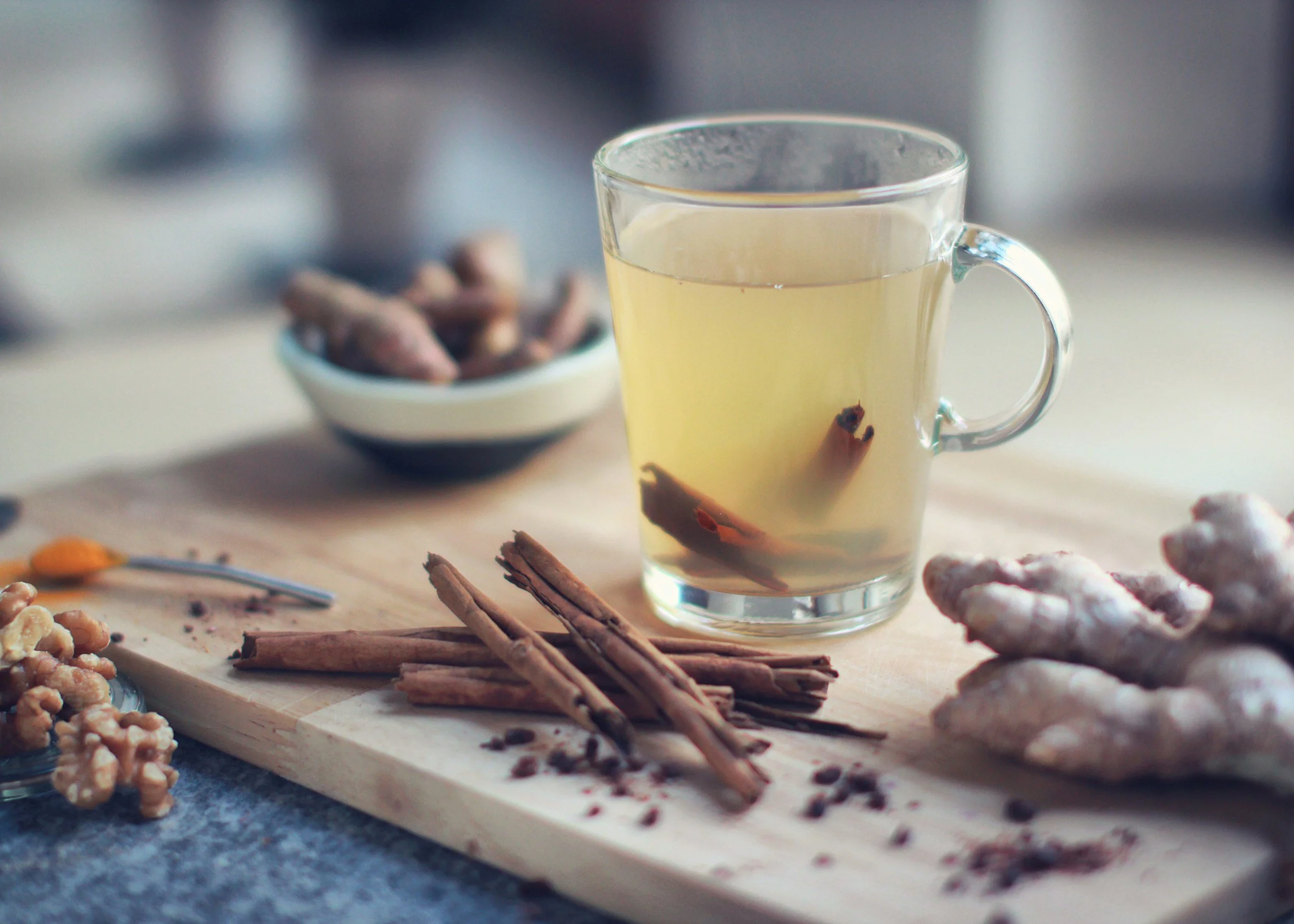By Amber S, CN Buyer & Supplements Education Coordinator
Ah, Pumpkin Spice Lattes. Undeniably one of the most polarizing items of autumnal cuisine, you're either counting down the days till you can get your first PSL, or you roll your eyes whenever someone mentions them. But did you know the spices in that festive brew have a complex and fascinating history? Let's dissect the origins of some of these familiar flavors!
Cinnamon (cinnamomum spp): Did you know that there's actually several types of cinnamon? Cassia (cinnamomum cassia) is the one most people are familiar with; its sticks are thicker and usually consist of one single layer rolled into a tight tube. True cinnamon (cinnamomum verum) consists of fine, splintery layers of bark that fragment easily. And, yes, cinnamon is actually tree bark! Cinnamon trees are native to China and Southeast Asia, and their bark has been used as a spice for thousands of years. You'll often find cinnamon in sweet desserts, candies, and gum, but it's also a popular addition to savory dishes. It's one of the ingredients in Chinese Five-Spice powder, where it's used on everything from pork to seafood. Cinnamon also has some impressive health benefits: its high levels of antioxidants possess potent anti-inflammatory properties, and early research suggests it may have beneficial effects on the body's ability to process insulin.
Ginger (zingiber officinale): A showy tropical plant native to Indonesia, ginger appears in written records as early as 475–221 BCE. Its properties of easing nausea and indigestion are well-documented throughout history. They are due in part to a compound called gingerol, which speeds up gut motility (the speed with which food moves through the digestive tract). Like cinnamon, the western world mostly uses ginger in sweet foods and beverages, though it can also be pickled, used to flavor meat, and even brewed into wine!
Allspice (pimento dioica): Contrary to its common name, allspice is not a spice blend but rather the dried unripe berries of a single species of tree in the myrtle family (which also includes cloves). It's a popular ingredient in the traditional cuisines of Jamaica, the Levant, and Mexico, but it also pops up in many Scandinavian dishes, and is responsible for the traditional flavor of Cinncinnati-style chili.
Cloves (syzygium aromaticum): These potent little plugs are actually the dried flower buds of a tropical tree. Because they're so aromatic, they're often only used in small amounts.
Clove oil has been used for centuries as a topical analgesic, particularly for oral pain; it contains several compounds that possess strong antibacterial properties. An interesting note about cloves is that their name in many languages references their nail-like shape: they're kruidnagel in Dutch, clou de girofle in French, and Gewürznelke in German.
Nutmeg (Myristica fragrans): Another spice native to the islands of Indonesia, you'll often find nutmeg in pre-powdered form. But the spice actually comes in the form of a hard, dense ball about the size of a walnut. You can grate whole nutmeg into meat or cheese dishes, or over eggnog if you're feeling fancy. Nutmeg can, however, have psychoactive effects and even be poisonous in large amounts. But don't worry - you'd need to consume upwards of five grams of nutmeg to endanger yourself, so go ahead and enjoy that PSL!
It's important to remember that so many of the spices we regard as common staples in our everyday pantry have a long and storied history of use by people of color all over the world, and that we owe much of their spread to the horrors of the global slave trade. For that reason, we love supporting spice companies owned by people of color, including Diaspora and Fork on a Road; for their work in reclaiming the narrative of the global spice industry.

